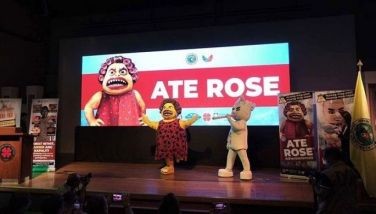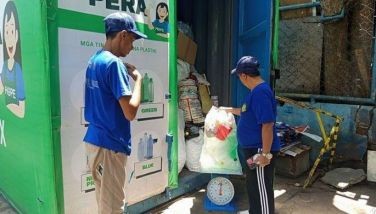More on SHS
Let us continue with our hypothetical example of Maria wanting to work in a hotel immediately after Senior High School (SHS).
To make our example a little bit more complicated, let us add another fictional individual – Juan, who wants to become a nurse.
Let us put Maria in a public high school and Juan in a private high school. For convenience, let us call Maria’s school Public High School (PubHS) and Juan’s school Private High School (PrivHS).
How did the Department of Education (DepEd) know which Tracks and Strands to offer to all the Marias and Juans in all public and private schools?
To decide on which Academic Strands to offer, DepEd worked with the Commission on Higher Education (CHED). CHED’s Technical Panels (composed of volunteer experts from many universities) formulated the curriculum for students intending to pursue college degrees.
To decide on which Technical-Vocational-Livelihood (TVL) Strands to offer, DepEd worked with the Technical Education and Skills Development Authority (TESDA), which in turn worked with the Department of Labor and Employment (DOLE) and the Department of Trade and Industry (DTI), as well as with various industry groups, to determine the occupations most likely to be open for SHS graduates.
To decide on which Arts and Design Strands to offer, DepEd worked with the National Commission for Culture and the Arts (NCCA).
To decide on which Sports Strands to offer, DepEd worked with the Physical Education departments of various universities, as well as with the Philippine Sports Commission (PSC).
In short, the SHS curriculum is a joint product of several dozens of people (if we include the people CHED and the other groups consulted, hundreds of people) working together with one goal – to help SHS graduates find employment, either immediately after graduation or eventually after college. (Employment is only one of the four targets of the K to 12 curriculum, but it is the one most clearly related to the anti-poverty thrust of the government.)
On paper, the curriculum looks perfect. Let us imagine, however, what will happen in reality.
Maria wants to work in a hotel. Juan wants to work in a hospital. PubHS and PrivHS, however, cannot just give Maria and Juan what these two young people want. Both schools will have to ask all the classmates of Maria and Juan what they want. Even then, even if (for the sake of our example) all the classmates of Maria want to work in a hotel and all the classmates of Juan want to become nurses, the two schools will not automatically choose the TVL Track and the Academic Track.
Everything will depend on two other things.
First, in which area of the country are the schools located? If PubHS happens to be in a region where there are no or few hotels, resorts, or restaurants, Maria cannot fulfill her dream, unless she moves to another region. If PubHS is in a region full of hotels, resorts, and restaurants, Maria may still not fulfill her dream if all these hotels, resorts, and restaurants already have all the employees they need and want.
Similarly, if PrivHS happens to be in a region where there are no clinics or hospitals, Juan cannot fulfill his dream, unless he moves to another region. Even if there are numerous clinics and hospitals in his region, Juan still cannot fulfill his dream if all these clinics and hospitals already have all the nurses they need and want.
(To make things simpler, let us first set aside the obvious possibility that either or both Maria and Juan will go abroad. Supplying the labor needs of other countries is, to me, not a valid objective for our educational system, which we Filipinos support with our taxes.)
In other words, the Tracks and Strands that a school can offer depend on the demands of the industries in a given region.
An ongoing research project by the Fund for Assistance to Private Education (FAPE) articulates this factor. The FAPE Senior High School Market Research Project “seeks to accomplish the following: (a) determine preferences of parents and students for senior high schools; (b) ascertain the manpower requirements of the local industries in the community and nearby provinces; (c) based on the identified manpower requirements, verify the most appropriate Tech-Voc tracks for SHS and the context of the university-bound tracks of the SHS program.â€
The second factor is the school itself. Is PubHS able to have the laboratories for the Home Economics Strand in the TVL Track? Can it build at least one model hotel room and one model kitchen on its campus? Can it hire enough TESDA-certified teachers to conduct the hospitality classes?
Similarly, is PrivHS able to have the laboratories for the Science, Technology, Engineering, and Mathematics (STEM) Strand of the Academic Track? Can it build at least a biology laboratory, a physics laboratory, and a chemistry laboratory on its campus? Can it hire enough Bachelor of Science majors in biology, physics, and chemistry to offer the specialized subjects in the STEM Strand?
The personal preferences of Maria and Juan, therefore, have to be weighed against the needs of their communities and the capability of their schools. (To be continued)
- Latest



























